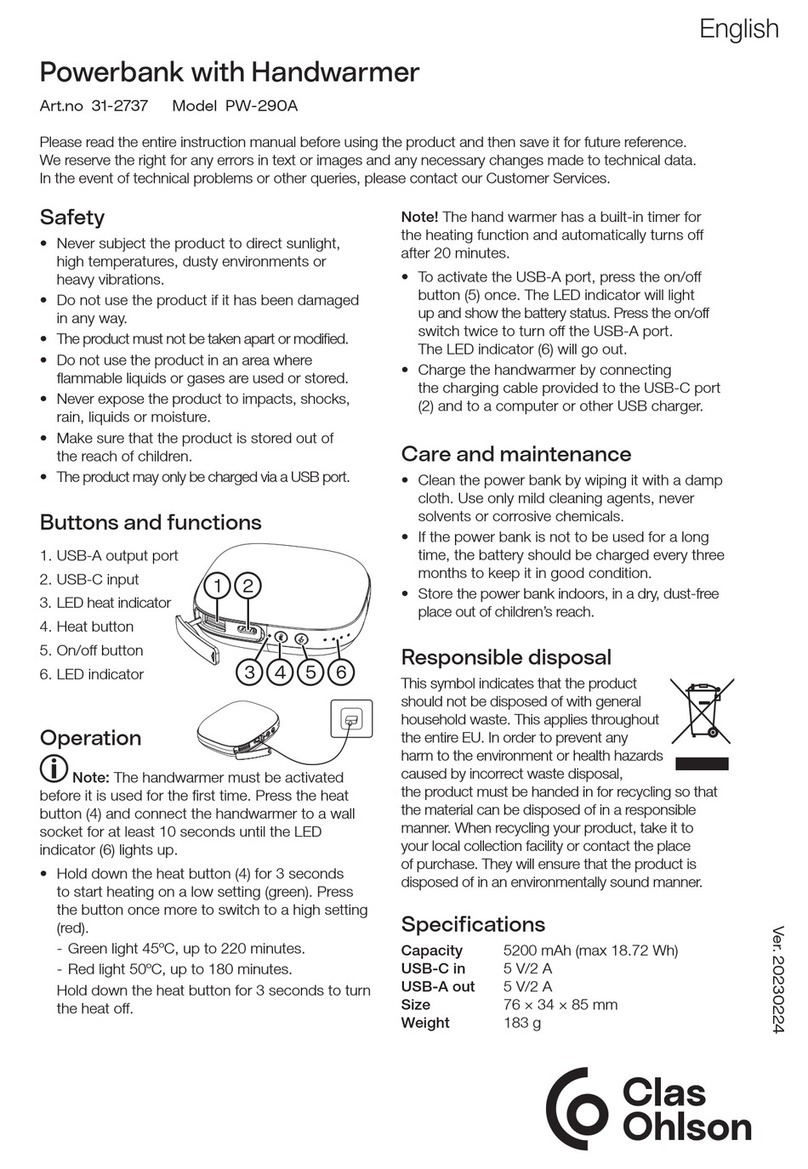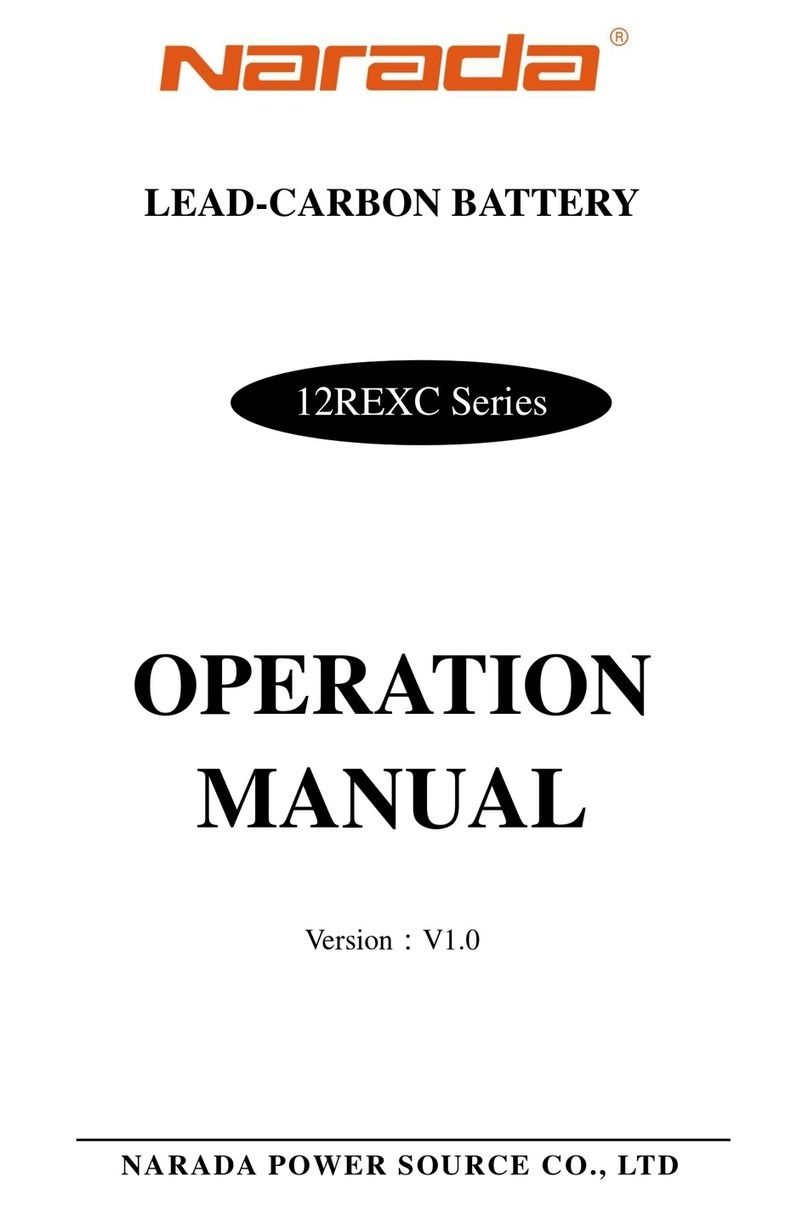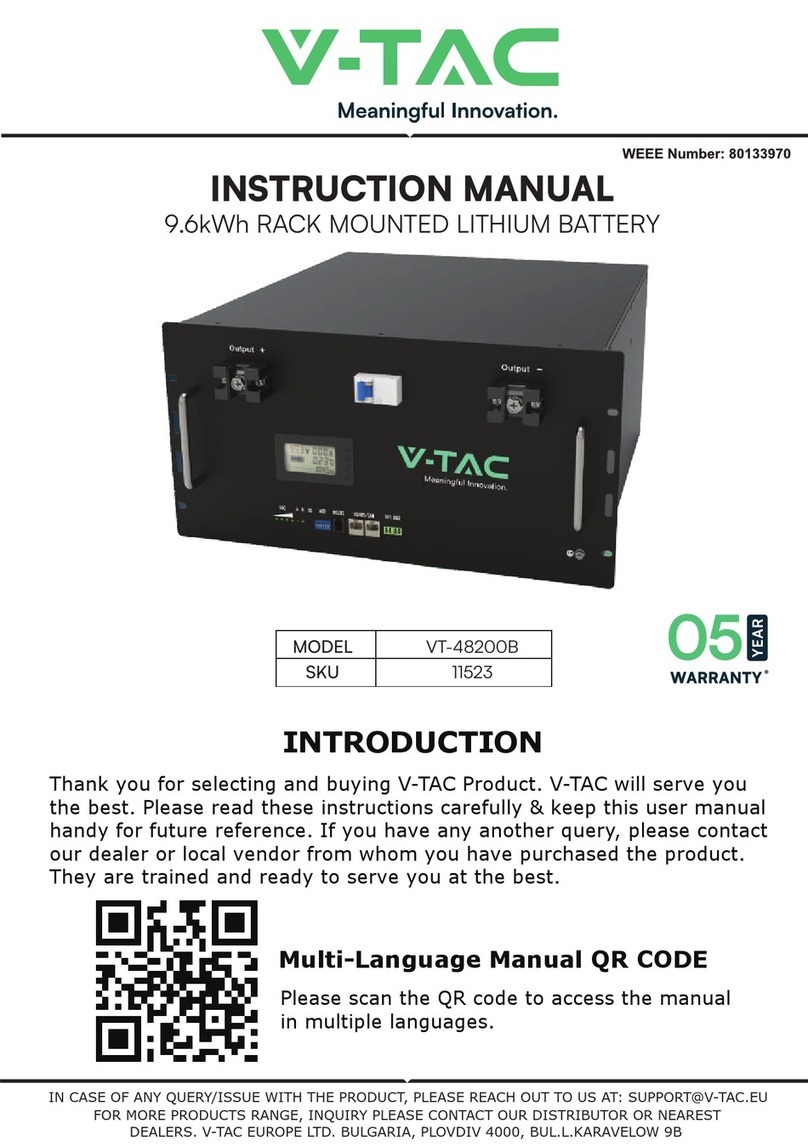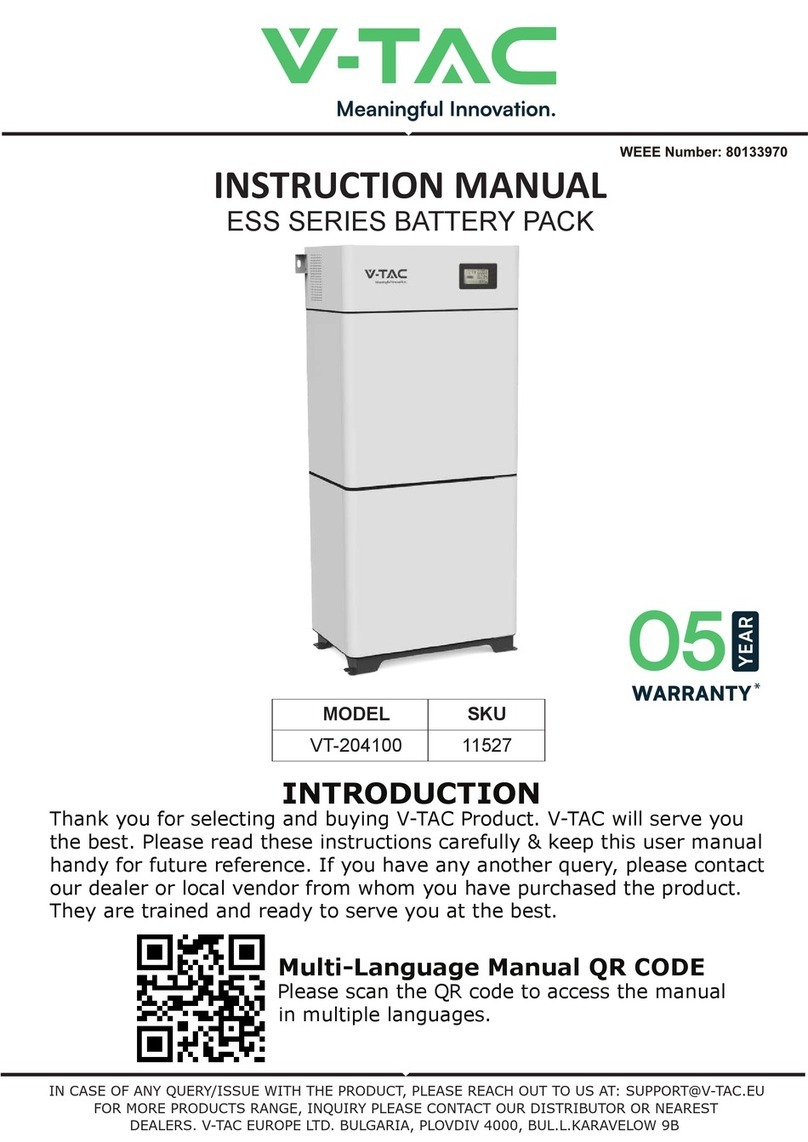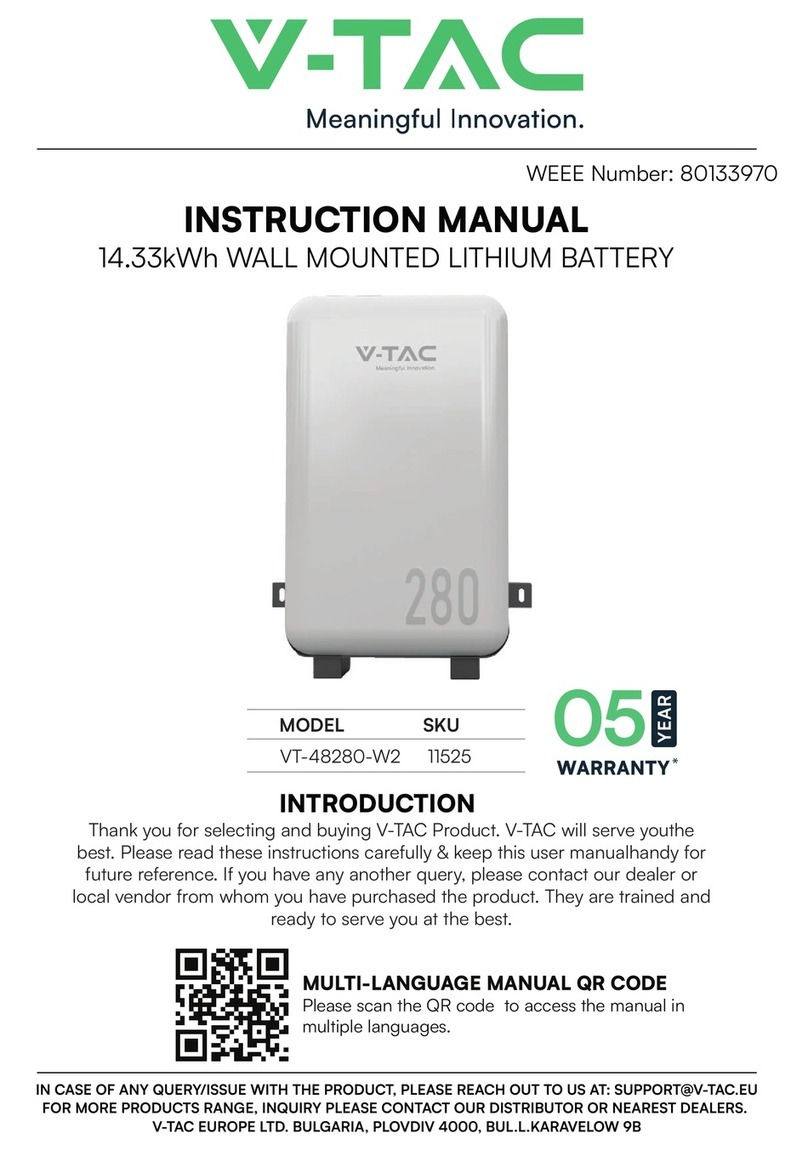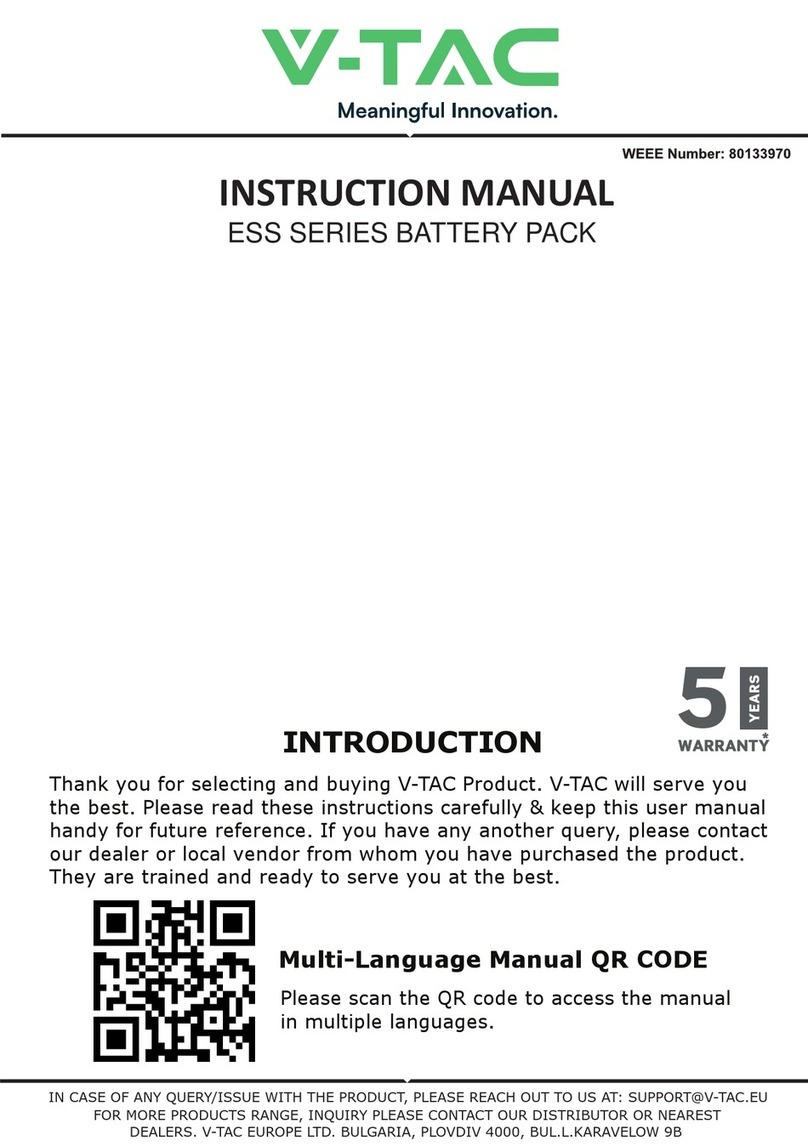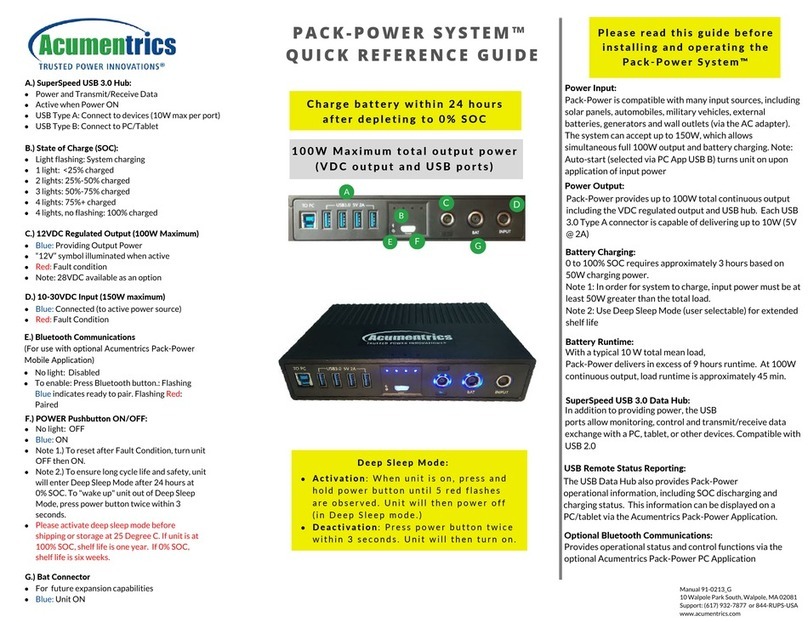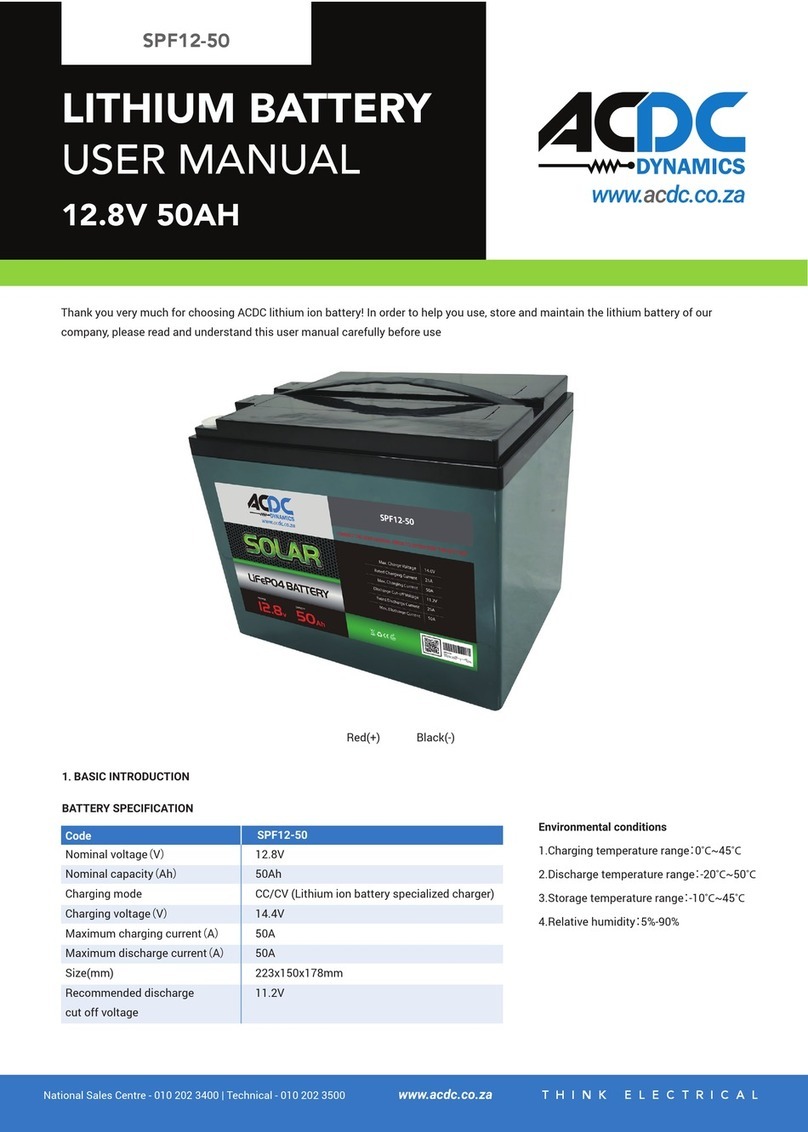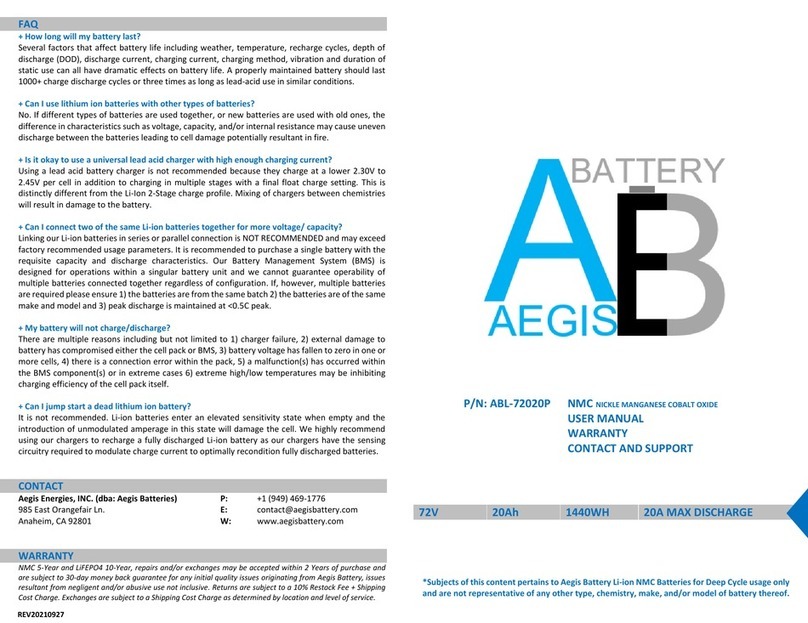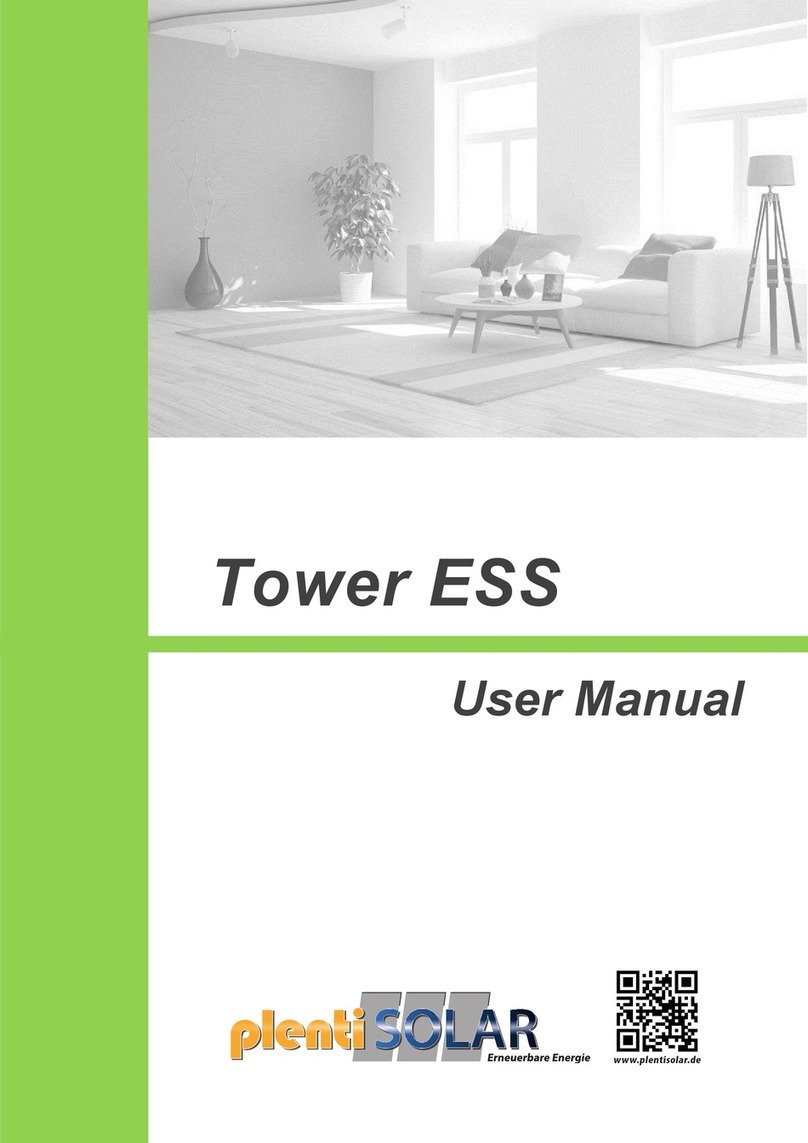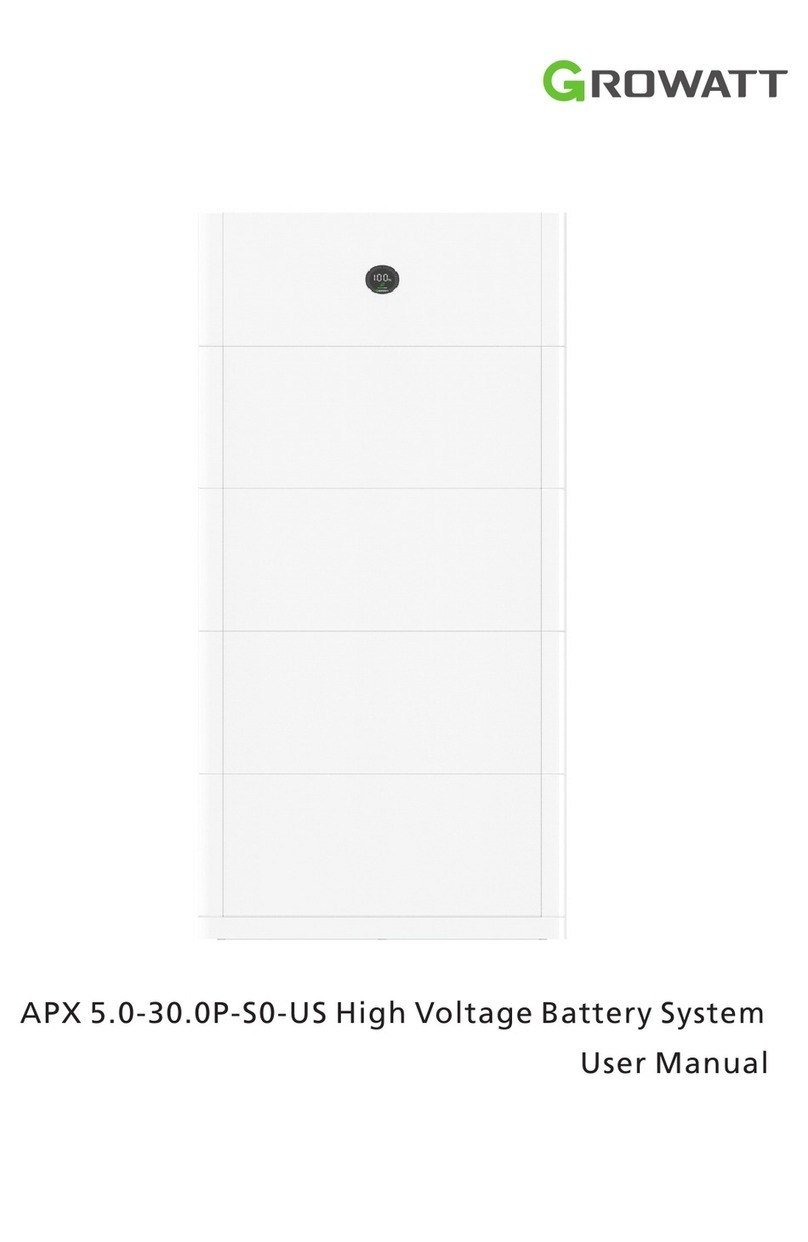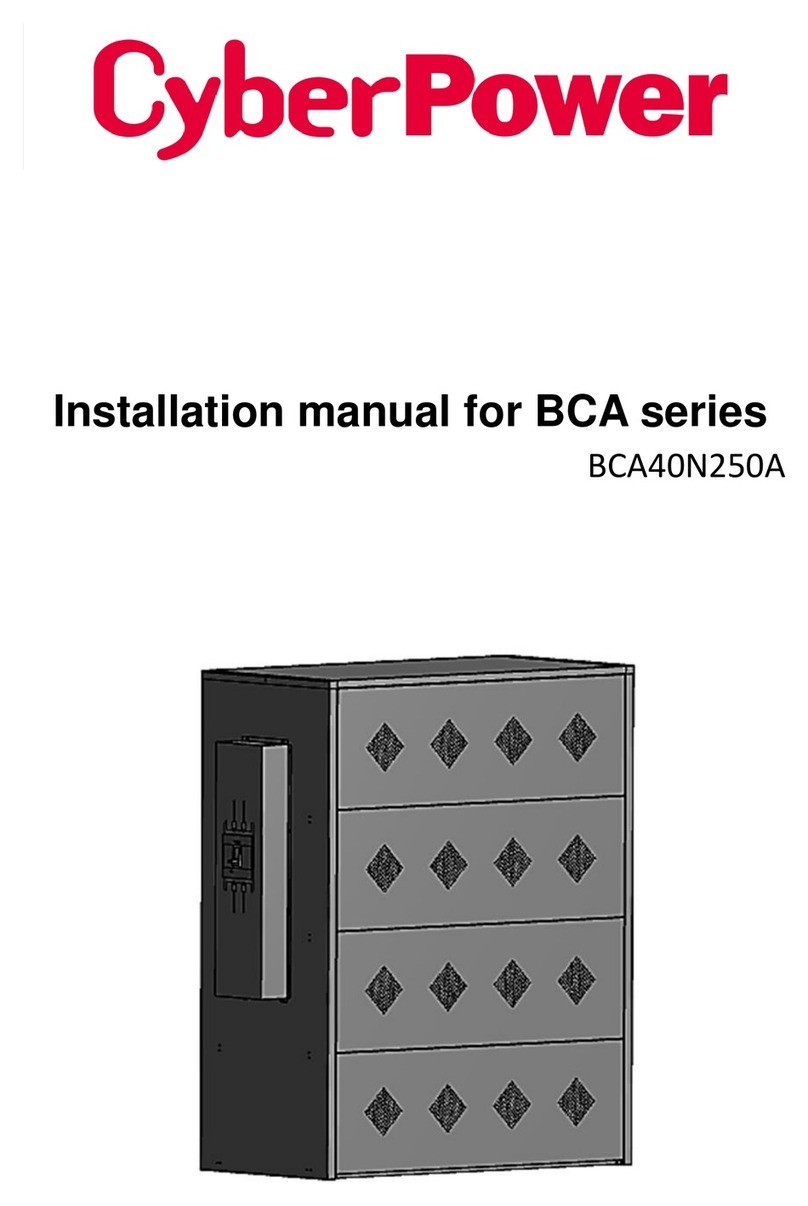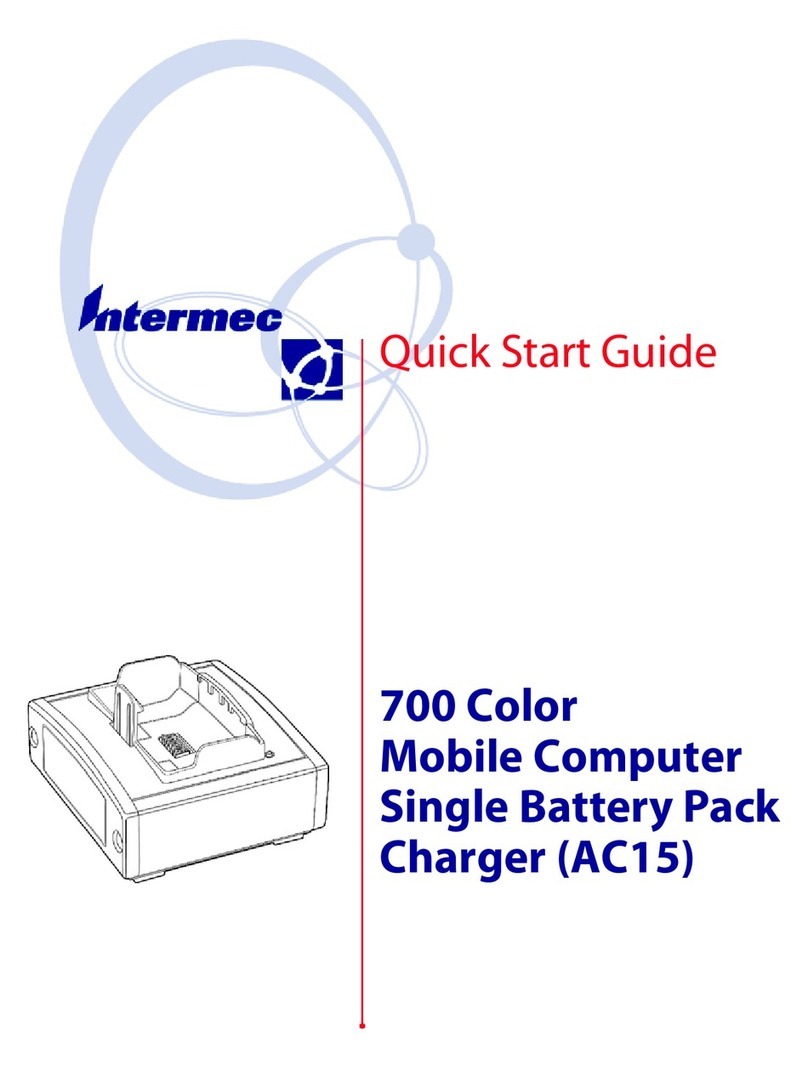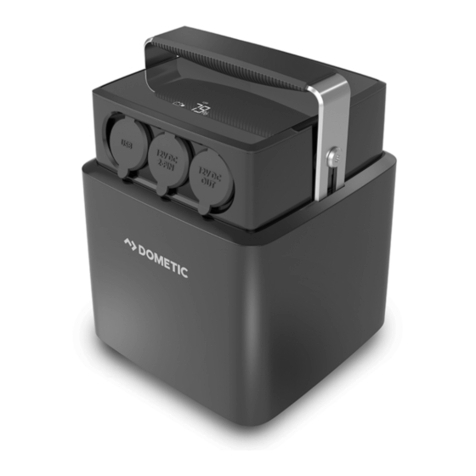
Copyright © Vestwoods Technology Co., Ltd. 8
No. Items Parameter Remark
19 Humidity 5%-95% RH, no condense
20 Protection
System over-voltage and system under-voltage, cell
over-voltage and cell under voltage, charging over-
current and discharging over-current, charging high
temperature and charging low temperature,
discharging high temperature and discharging low
temperature, short circuit protection, insulation
faulty protection
21 Dimensions (W×H×D) 640 mm×1280 mm×350 mm
22 Weight
VEH192100C: Approx. 230kg
VEH204100C: Approx. 238kg
3.2.1 Lithium-ion Cell
The lithium iron phosphate cell selected in the scheme is a special energy-type lithium battery product.
This series of lithium iron phosphate cells have high specific energy, longer cycle life, low cost, capable of
high current charge and discharge, high-temperature tolerance, high energy density, no battery memory
effect, safety, and pollution-free features.
3.2.1.1 Appearance
Lithium-ion cell's three views are shown as follows.
Figure 4. Lithium-ion cell three views (unit: mm)

